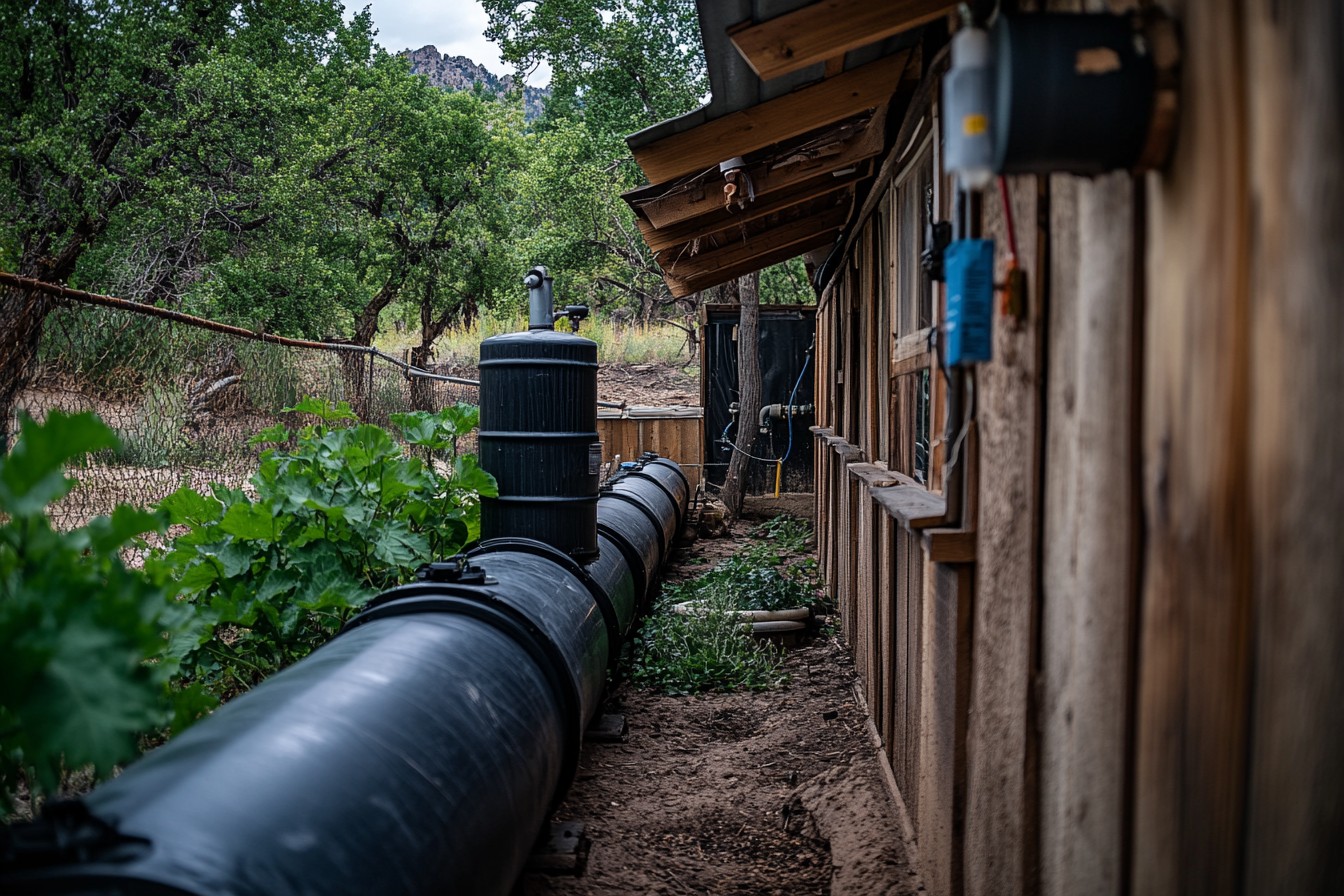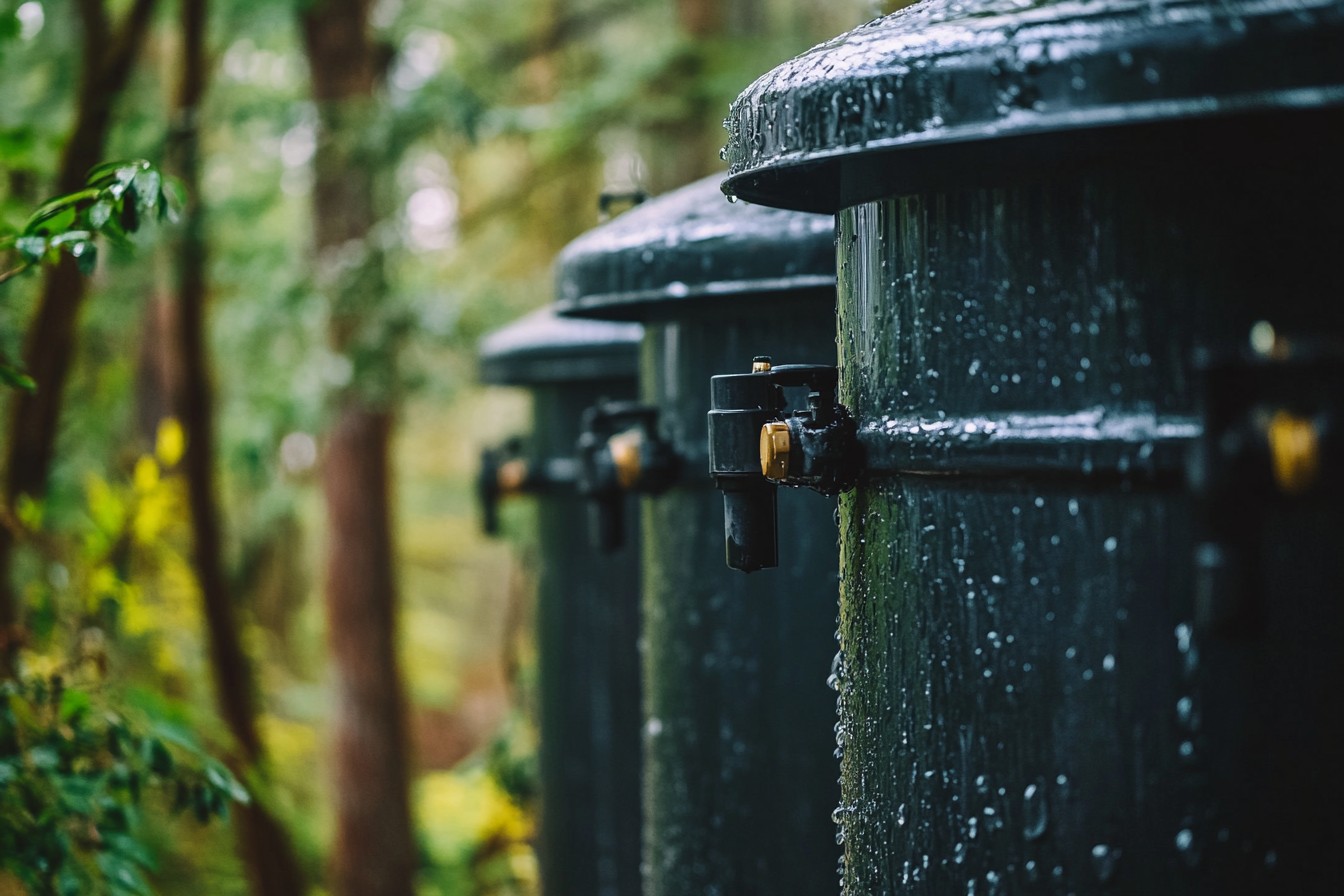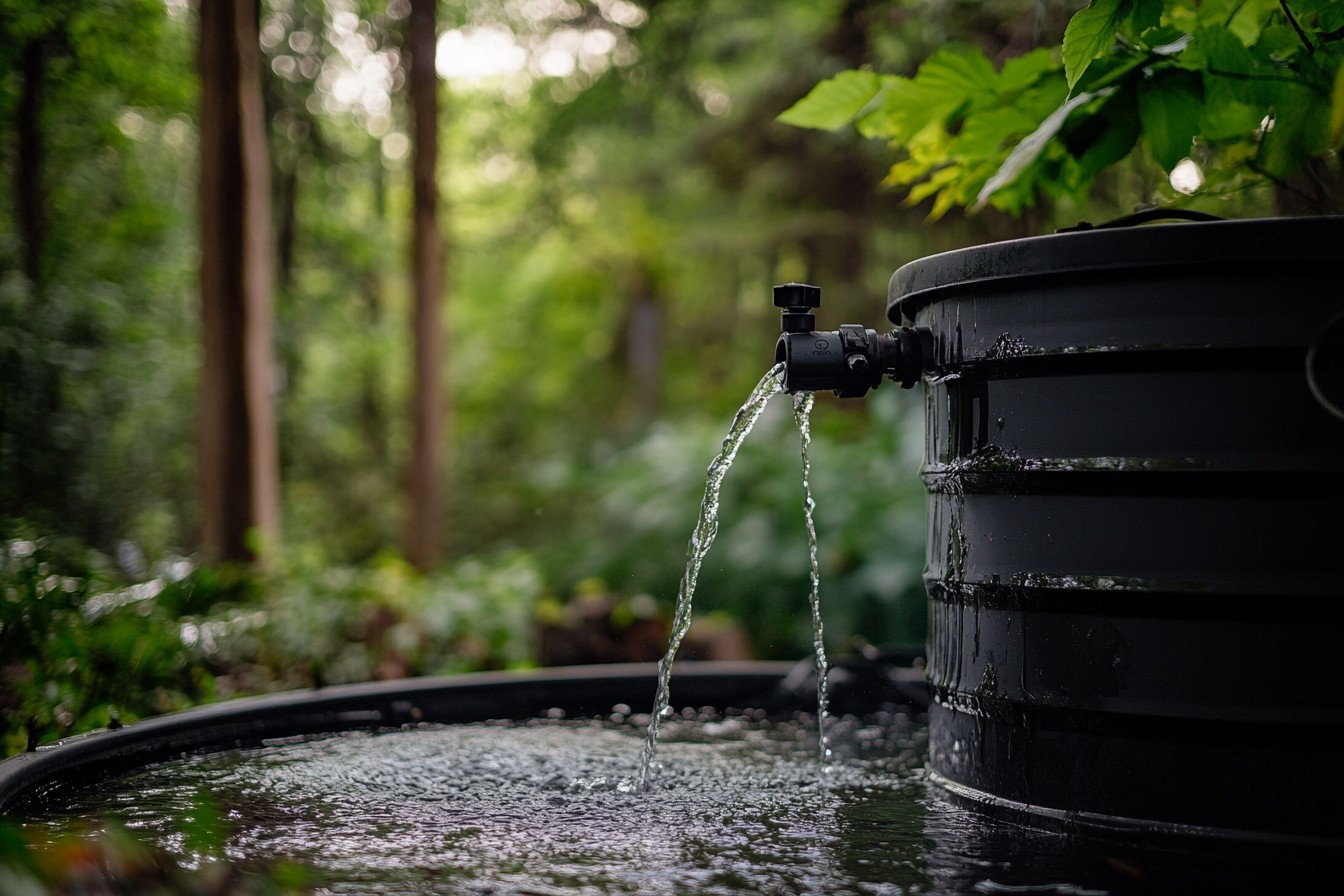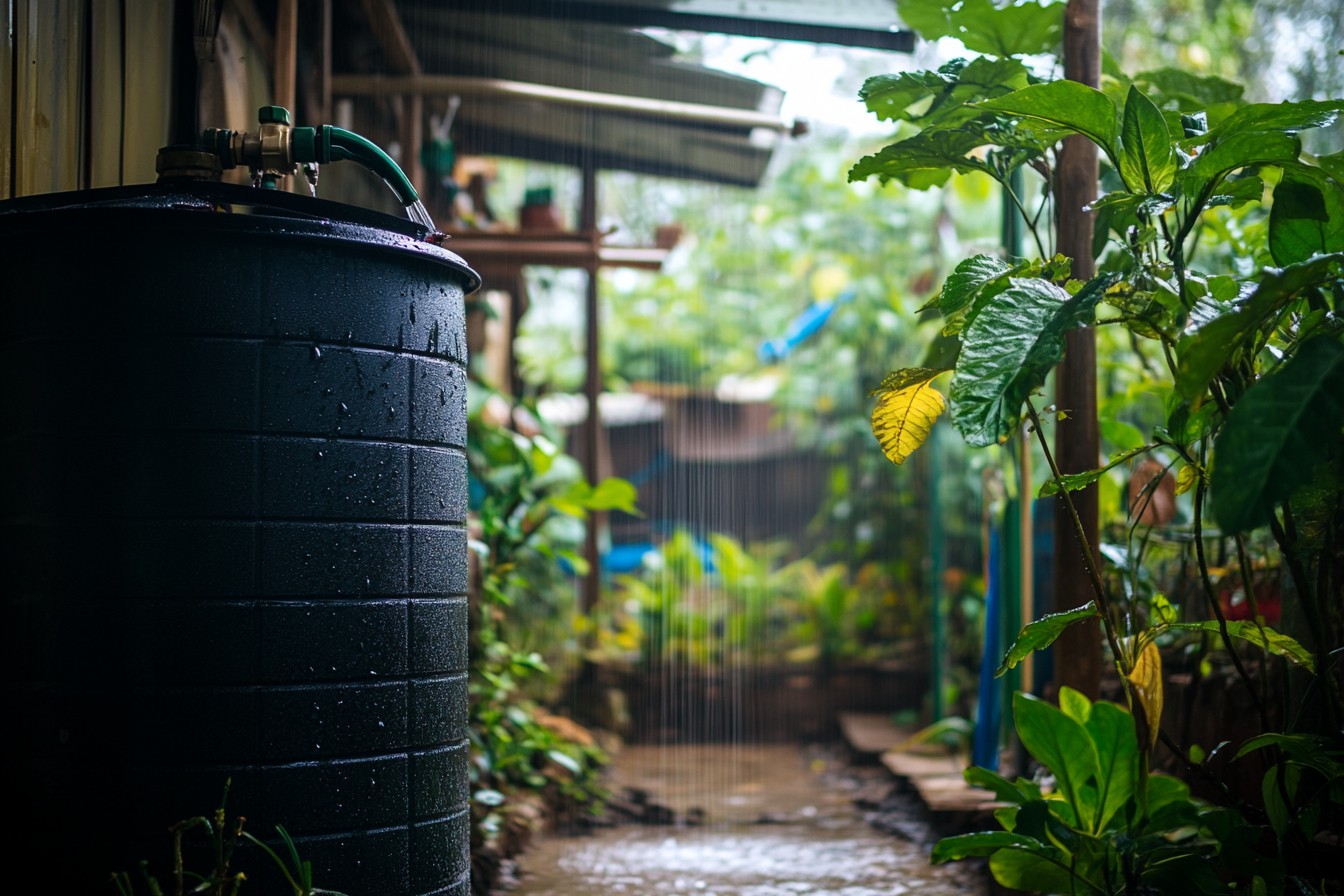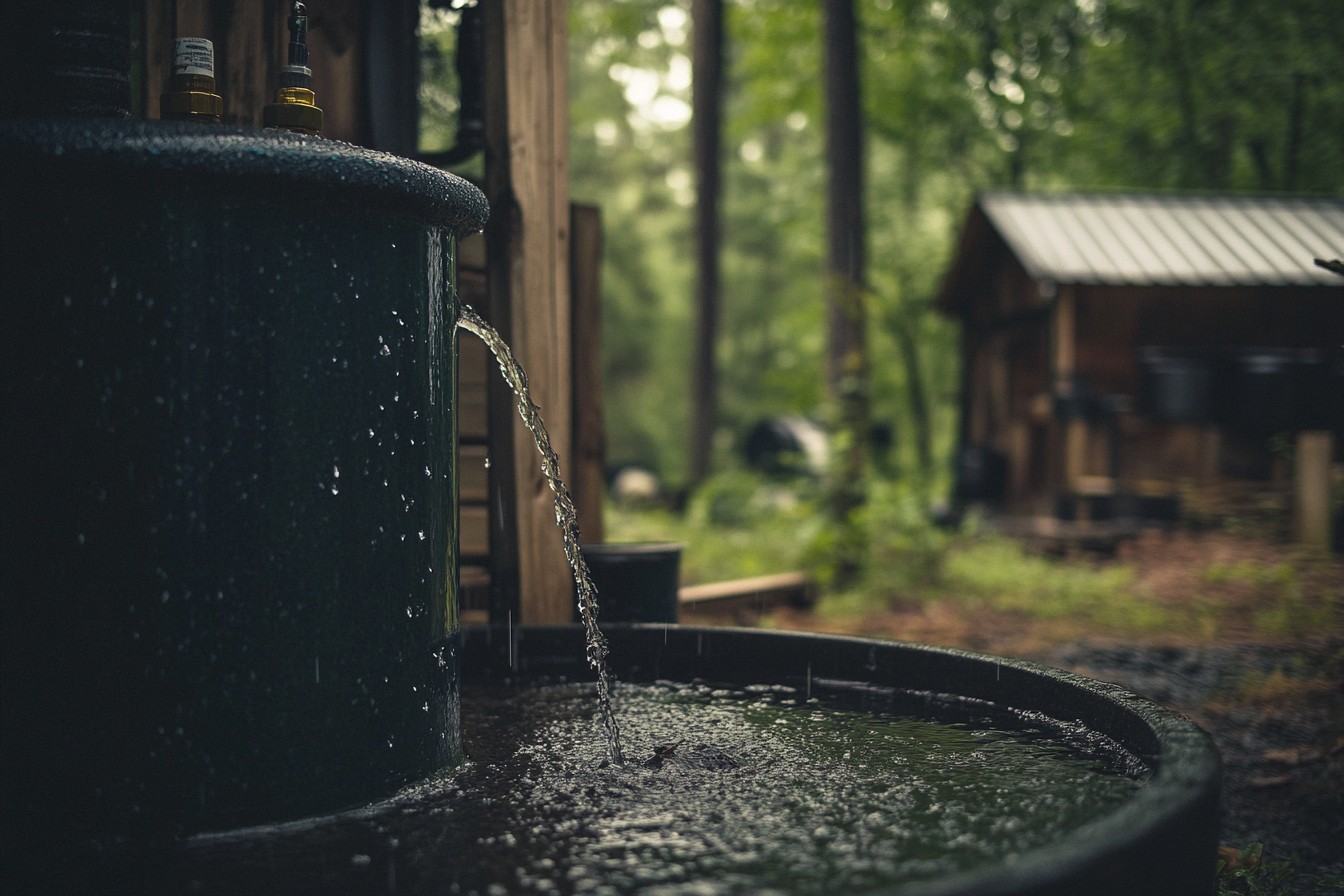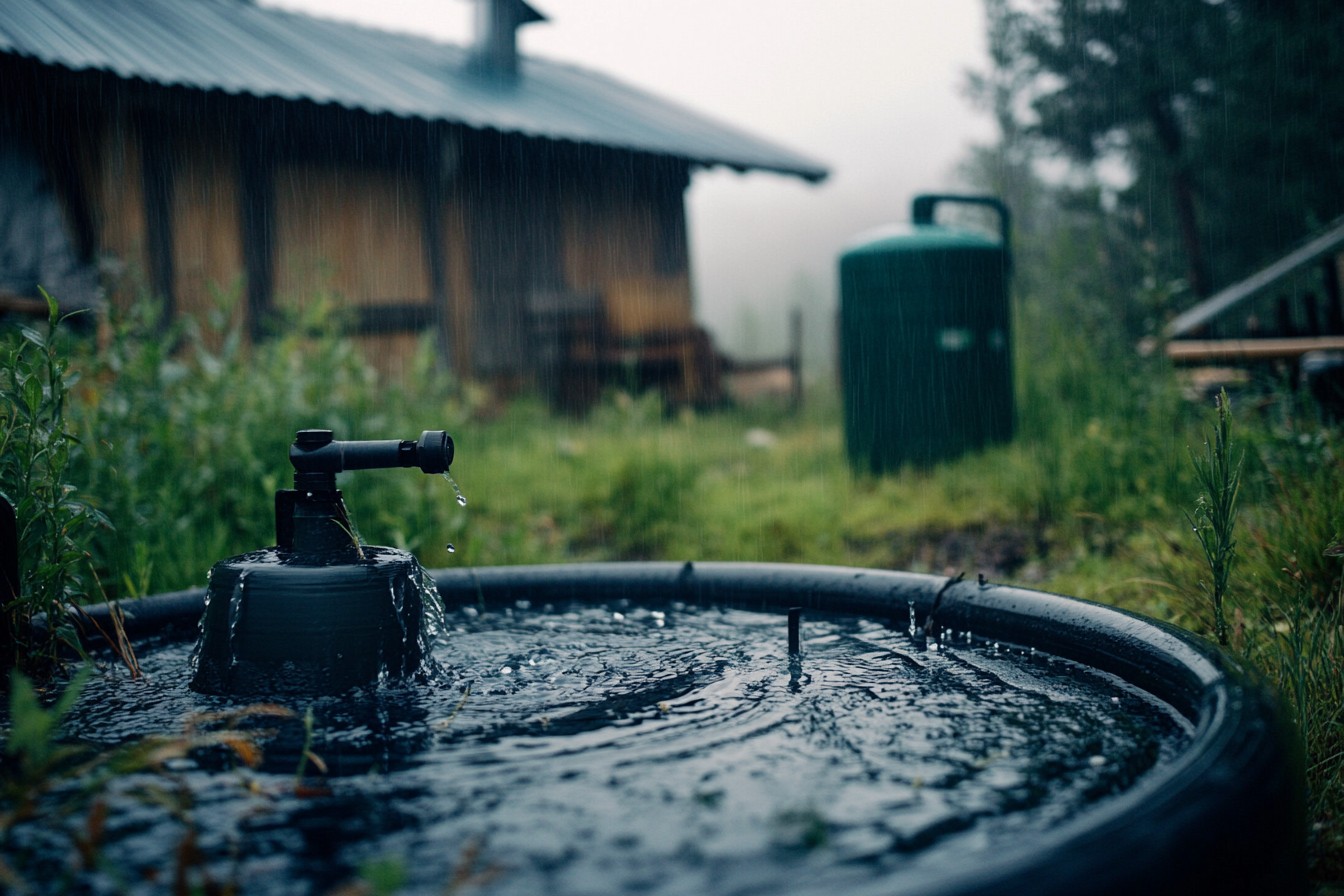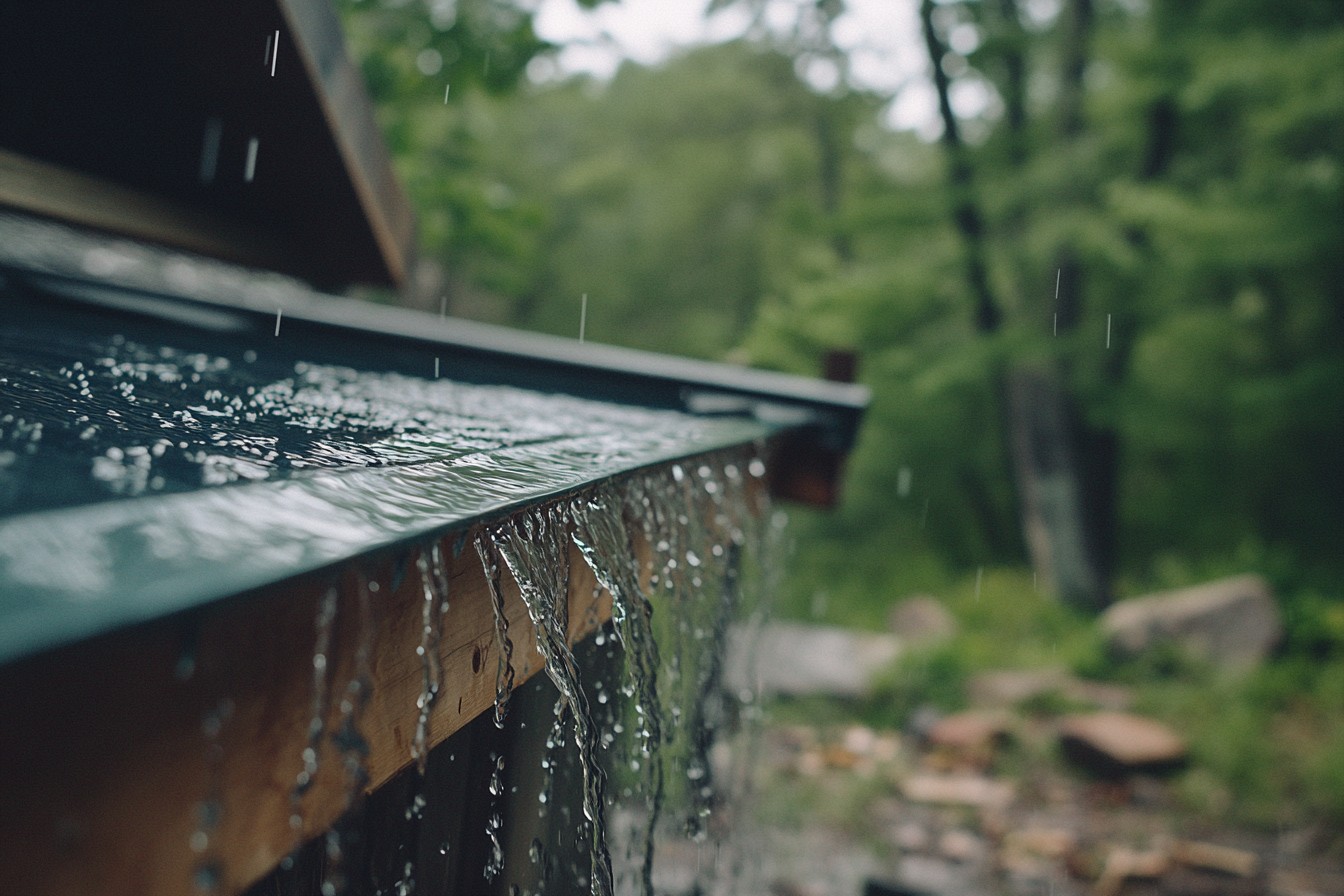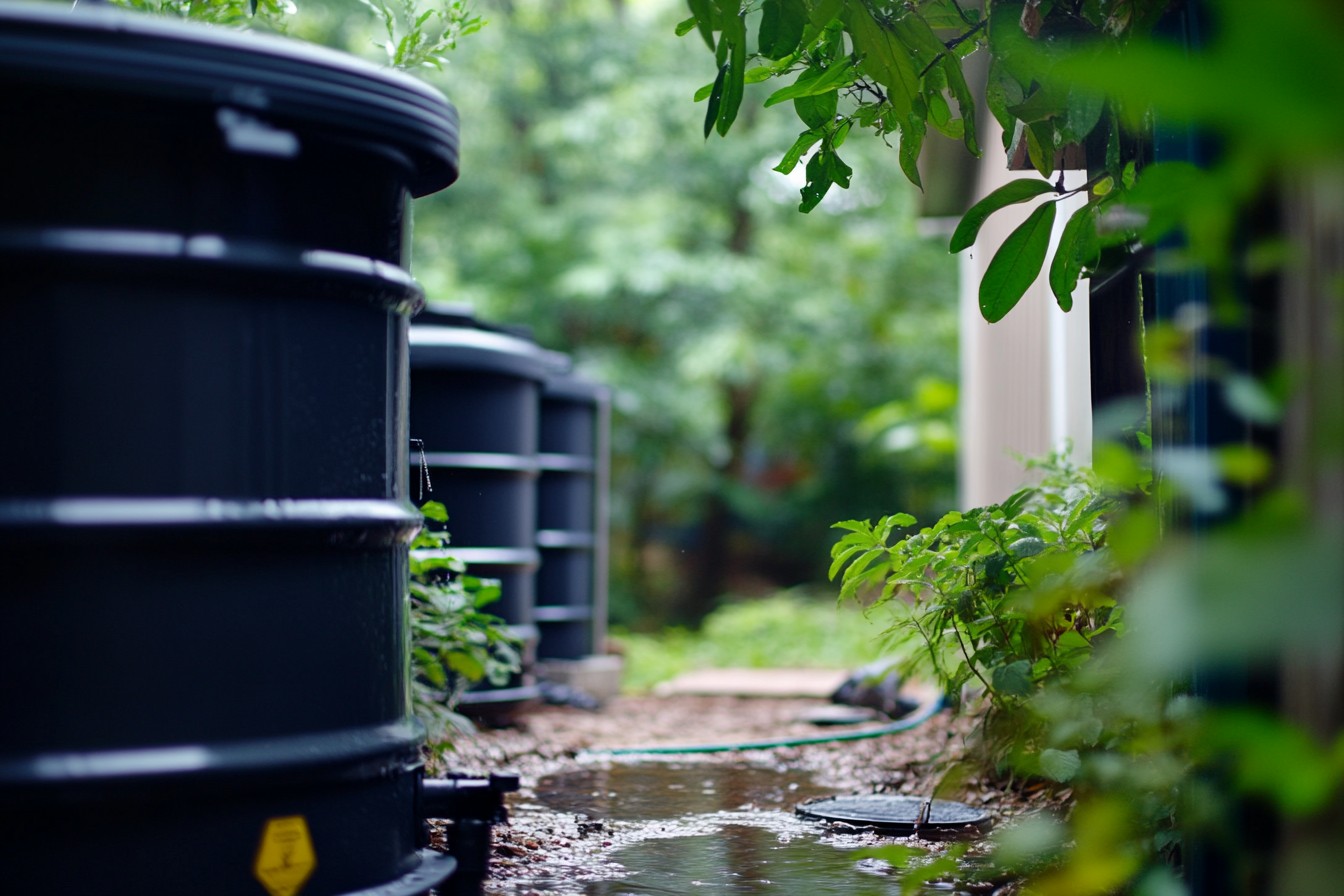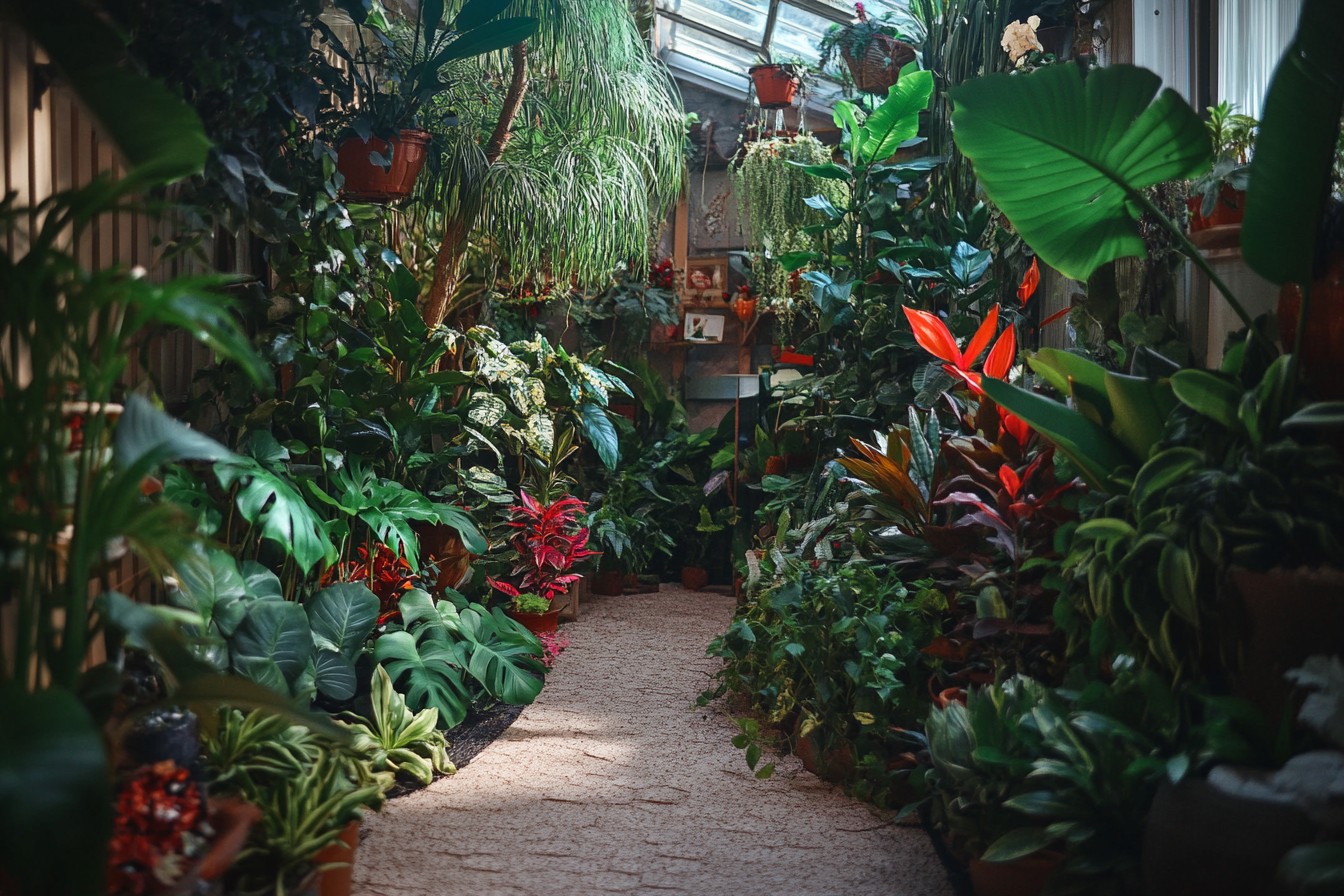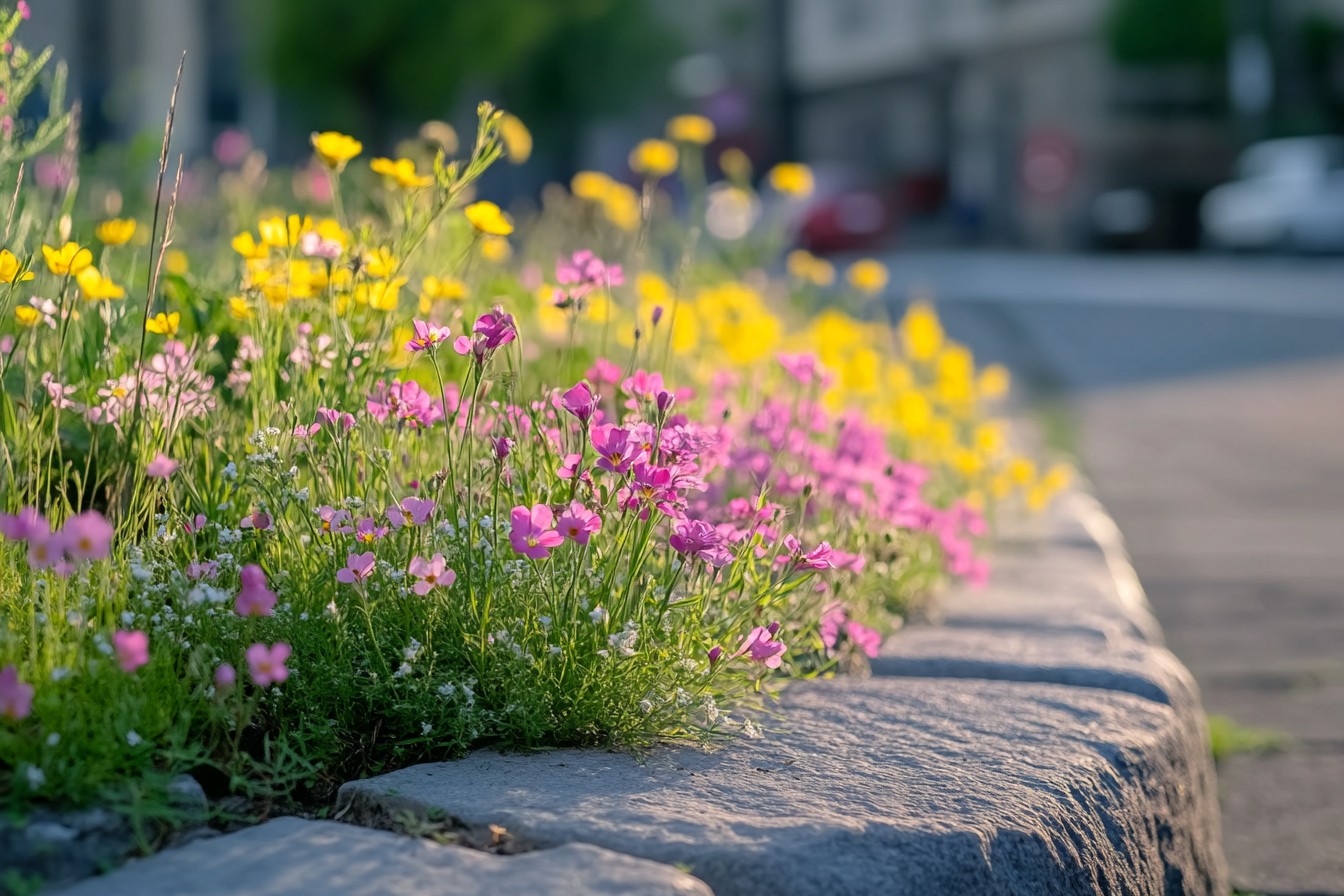The first time it hit me that I was officially “that guy” was not when I started tracking rainfall in my dedicated notebook or when I began eyeing every downspout I passed with unusual curiosity. It was not even when I made a spreadsheet to determine the precise water yield of my roof during different levels of rainfall. Rather, the moment of clarity struck when I realized that I was standing in my yard at two in the morning during a thunderstorm wearing a raincoat and holding a flashlight while gleefully watching water gushing into my collection system, while lightning cracked overhead and my neighbor’s security light illuminated me like some deranged garden gnome.
My friend Tom, who happened to be staying over that night, found me out there and simply said, “I’m not sure if I should be concerned about your safety or your sanity,” before retreating back indoors to reevaluate out friendship. But for the record, that deluge added two hundred eighty-seven gallons to my storage system. I would argue it was worth it.
My obsession with rainwater harvesting began innocently enough. About three summers ago, Chicago experienced an especially brutal dry spell that also came with citywide water restrictions. My garden, which had expanded from a “weekend hobby” into a “full-blown urban farm,” was struggling.
The costs of hand-watering my garden using city water facilities were simultaneously expensive and restricted to specific days and hours. One evening, I clearly recall seeing a thunderstorm in the distance as I stood with a hose in my hand watching the city water flow down the garden over the soil. I could see the rain a few miles off while I spent money on using city water on unrestrained trees.
A surge of intense realization brought forth to me wanting to explore new avenues to sourcing water. At that point, collecting rainwater seemed easy considering I had no prior skills. With zero prior knowledge, I was one brilliant idea away from embarking on a new journey, quoting “How hard could it be?”
A sophisticated guide is what I needed to allow myself to do it properly. With casual research, my mind began to recollect countless conversations I had around water harvesting and realized that such ideas like rain barrels met the bare minimum for what I was trying to accomplish. Considering the setting, it was very unlikely that relying on a single 55-gallon water barrel would not deplete me in July.
I required extreme capability for a specific task. And since I was going to spend the money and effort, why not go all the way? Why not come up with a way to fully automate my sprinkling system which would enable my garden to completely detach from municipal services?
This is what led to the inception of the Great Water Independence Project, which my friends initially thought of as just another one of my “phases,” but came to realize this was transforming my identity. The foremost challenge was estimating my water requirements. My intensive planting area of 800 square feet was projected to require slightly more than120 gallons per day during the summer peak, even consuming 120 gallons per day.
Forget sustenance, I needed space to store 2,500 gallons to be completely free of water within a mere 3 weeks of rain. In Chicago. Which expensive city do you know that offer apartments along side normal-sized homes? None. They all have yards a child could get lost in.
Calculating collection potential proved to be less challenging than expected. Chicago experiences an average of 36 inches of rainfall each year and my roof has a collection area of 750 square feet. With each square foot yielding 0.6 gallons of water per year, I would be looking at my roof alone collecting roughly 16,200 gallons of water annually.
All I needed was to figure out how to clean, store, and allocate the water resources cleanly and efficiently. During the evenings, obsessing over water technologies became the new norm for me. It seemed like an entirely new world of nerdy water technologies opened up for me with floating extractors, solar pumps, first-flush diverters and filtration systems.
Constructing online profiles was quite interesting since folks argued over the validity of various piping materials as if they were debating over hardcore sports. It became ‘weird’ to say the least when I started evaluating the guttering systems of my neighbors.
Finding appropriate constainment for the water posed a rather unique problem. Where exactly does one put 2,500 gallons of water hyperventilating water in an urban backyard without it becoming the only visible feature? A single massive tank was too severe for the neighborhood aesthetic, multiple barrels complicated my budget, and buried cisterns were simply too expensive. I finally brainstormed four 550-gallon IBC rooftop tanks and cut them behind a custom built screen disguised as garden shed extension.
It quickly became an undertaking to try to get my hands on these totes. Although new ones were out of my budget, I was able to buy some old food-grade totes from a local company that processed food which sold used totes that previously held organic grape juice concentrate. After cleaning them with a bleach solution, I placed them on a leveled surface behind my garage. I then connected each tote in a series with a 2-inch PVC pipe for uniform filling and emptying.
After that, I moved on to building the collection system. It was as simple as adding downspouts to my existing rain gutters, however those physiognomies needed major work in order to improve their performance. I took off the old downspouts and replaced them with 4-inch PVC pipes, also adding leaf guards—an invaluable addition if you don’t want to spend most of your free time unclogging pipes while standing on a ladder after taking a trip to the technician.
The first-flush diverter – an ingenious device that traps the first runoff that contains most of the roof pollution – was constructed from a PVC pipe, a floating ball, and a self-resetting restricted drain that resets itself between rainfall events. Water quickly taught me that it is extraordinarily dense (around 8.3 pounds for a single gallon), so the tanks filled with water would ultimately weigh over 20,000 pounds. This prompted me to spend a frantic weekend reinforcing the pad underneath the tanks using crushed stone, concrete blocks, and enough calculated thinking to make me reminisce about almost all the college engineering calsses I dozed off in.
during this stage, my engineer friend, Mike, decided to pay a visit. He watched me in silence for roughly 20 minutes before saying… quote, “you are massively overbuilding this,” and then went ahead and helped because he reasoned, “I’m too invested in seeing how this ends now.”
The filtration system underwent several complicated processes over time. I began with a screen filter to trap particulates, and it went fine, until it didn’t. After realizing there was sufficient gunk within my supposedly clean water, I decided to upgrade to a three-stage system which included a preliminary mesh filter for larger particles, a finer sediment filter, and last but not least, a carbon filter for any amalgamated contaminants.
Although not purification fit for drinking water,” it was enough for irrigation in the garden so as not to risk the health of the plants or clog my system. Now, on the topic of distribution, the absence of municipal water pressure presented a major problem. For effective irrigation, especially in the border areas of the garden, gravity alone does not work.
Other than my (one spectacularly unsuccessful attempt at a hand pump that left me with a sprained wrist and newfound respect for pre-industrial farmers) and settled on a 12-volt DC pump solution with a battery backup solar panel. Each of those features required its own control box, which added complexity. It was not emergent as much as a simple on/off switch or control panel with pressure monitoring, but it was later added low-water shutoff protection, battery level indicators, and eventually turned into an Arduino controlled timer system that would automatically water certain zones at different times.
Tom began calling it “the command center,” and my neighbor would ask from time to time whether I was “still building that spaceship” whenever he caught sight of me working on it. The truth moment arrived during a spring thunderstorm that let loose nearly two inches of rain in three hours. I stood in the garage doorway watching my creation in action for the very first time—water cascading from the gutters in the first-flush system into the preliminary filtration and finally into the storage tanks.
No leaks, no overflows, and no catastrophic failures.
After that single storm, the tanks collected approximately 900 gallons worth of water, which was more than enough water to sustain my garden for over a week. I may or may not have done a small victory dance that I will not confirm, nor deny, was captured by my doorbell camera. The very first summer with the system operational was a great learning experience that came with both triumphs and new challenges.
Looking at the bright side, from June to September, I didn’t spend a cent on municipal water for the garden, which saved me about $240 while avoiding watering restrictions. The tanks proved enough to make it through even a two-week dry spell in July, although they fell to a nerve-wracking 20% capacity before a merciful thunderstorm filled them. The difficulties faced were lessons in themselves.
When summer came and the translucent tanks began to heat up, algae became a problem. Covering the tanks in several coats of light-colored exterior latex paint kept the water cooler and blocked light, solving this issue. Pressure changes in the distribution system caused periodic blowouts of irrigation lines until I put in a pressure control and relief valve.
Winter in Chicago came with its own set of problems. Most commonly, for each tank, I needed to place dunks containing BTI, a biological control that only targets mosquito larvae, to stop the fonctionnerous larvae from accessing any unreachable standing water. Though I planned to drain my system for the winter, an abnormally rich autumn left the tanks almost full, and in November, those resources were far too valuable to waste.
Last winter, I developed a winterization strategy that involved disconnecting and draining all above ground pipes, insulating, flooring tanks to relieve pressure of ice expansion, and installing a small stock tank heater to each tank to keep a small area from solidifying. I had remarkably kept 80% of the stored water which was ready for early spring use. Now in its third operational year, the system has evolved based on experiences been through.
My friend who is involved in plumbing provided me insight through an extensive research that resulted in adding a secondary particle filter with the intention of mitigating clogging the filters due to pollen in spring. Now the pump system has also added a pressure tank which removes cycling of the pump and ultimately extending its lifespan. Basic water level monitoring tools have been incorporated that interfaces with the home WiFi, thinks of hyper-obsessive checking habits (for “water” in tanks during dry spells or rainfall, set up alerts when the water dips below 30% or exceed 90%).
The most noteworthy enhancement occurred after a particularly powerful storm overflowed the tanks prior to my having the chance to divert the excess. The incident flood prompted the addition of an overflow control feature—basically, a network of buried perforated pipes that channel water beyond set levels to specific rain gardens designed for occasional flooding. This resulted in a fortunate miscalculation: now restictioned flowering beds support some of the most moisture-loving native plants which also shower them with vivid plumages while basking in the sun and caring for the overflowed spaces without provocatively whimpering.
Relative to the actual performance metrics, the numbers have surely proven my pre-speculated expectations unreasonably optimistic. It is now possible to estimate with confidence that such systems reliably collect roughly 80% of the presumed roof runoff and 13,000 gallons in a year. In crude figures, that amounts to providing 85-90% of the water needed by the garden, municipal water being a supplemented option only in periods of sustained drought heat or during maintenance works to the waterworks system.
Costs begin to show savings in the long run, this includes a solar powered electric pump which has the advantage of relying minimally on grid supplied energy during periods of prolonged overcast skies. During periods of heightened use, the filtration system does require some form of clean washing or replacement every couple of months with a quoted expense of around $45 for filter media throughout the year.
The total cost of an initial installation, which includes tanks, piping, filtration, pump systems, and construction materials, is approximately $2,800. Total annual costs are around $75 for maintenance and spare parts. The system will pay for itself in about nine years, excluding the tangible benefits of water independence and drought resilience, against average annual savings of $320 on water bills.
Possibly more important than considering the financial costs is how the system’s actual performance during drought events. Last summer’s mandatory alternate-day watering period led to a six-week dry spell which my garden mitigated perfectly. The difference in my flourishing plants compared to the struggling neighborhood gardens resulted in no less than seven neighbors approaching me with their inquiries which resulted in two fully scaling down versions of their setup.
The unanticipated but remarkably significant water reserve provides a psychological boost. Unlike everyone, there is deep food satisfaction when watching rain knowing it is actively replenishing their resources. It becomes all the more useful during dry periods when decisions can be made regarding water usage based on actual storage levels, rather than waiting for rain or rising water bills.
I have developed a sense for weather patterns and how they may affect cloud yield. These insights may help anyone trying to develop a similar system:
Assess how much water your garden requires and how your water collection performs. Potential overbuilding could increase costs, while underbuilding can leave your collection vulnerable.
Ensure you follow a strict regimen with your water collection before you set up the system. Tank bases and pipe support systems require sufficent construction in them because of the immense pressure the water would exert once filled.
Failing to meet expecations will result in mighty shortcomings. Self provision of the requisite filtration is a must. Dirt from your roof can be due to unwanted guests termed as birds, which leave droppings, and also pavement needles christened as asphalt particles.
If proper self provision is not ensured, the risk of clogged irrigation, wage builds and even perpetual plant harm is on the tables. Beginning with every plan is getting way more easier than retro-fitting policies to prevent frost or aid in overflow management later.
Adding drought measures is crucial, even in areas drenched with rainfall. Difficult is accessible maintenance. Every filter, tap, and linkage will require servicing in the long run.
If gaining access to these oculomotor coordinates takes as much effort as achieving an aerial gymnastics stint, reparation works will be postponed until issues arise. Such systems are constantly changing. This spring, I implemented a more advanced water monitoring mechanism that tracks pH levels along with dissolved solids, enabling me to prevent problems before they impact the health of the plants.
At the moment, I am looking into options for advanced filtration systems that would render the water drinkable during emergencies, although these would require extensive modification and regulatory frameworks. Most of my neighbors have come to terms with my water obsession, though I sometimes catch them watching my tanks filled with water out of curiosity, mixed with concern. The local gardening society invited me to give a talk about capturing rainwater for landscaping and to my astonishment, it transformed into a two-hour lecture filled with flowcharts and diagrams that tracked the different seasons along with the collection shed.
Even if three of the attendees dozed off, and five approached me later requesting my parts list, I deem the outcome to be positive. While attending to other matters, Tom tends to reference the thunderstorm episode when he wants to challenge my decisions, albeit he has been enjoying the unrestricted access to the garden’s harvest during the system’s run. “The tomatoes are delicious,” he conceded last summer, “but you should probably not be standing under trees in lightning storms with the intent of watching water collection.” At the very least, his viewpoint is reasonable; I still argue that my garage’s angled, tin roof sheltered me from lightning’s wrath.
Most likely. I still find it somewhat meditative scaling the heights of crested aline’s storms. I sometimes stare out the window watching the booming downpours, my bred creation deceptively transform what would otherwise be a nuisance—surplus water—into a stored resource. It feels like a sizable triumph over wastefulness, achieving a small but meaningful step toward self-sustainability.
The system represents thousands of hours of research, planning, construction, and refinement which, over the years, led some people to deem these efforts excessive for “just watering plants.” But regardless of the raised eyebrows or furtive looks it attracts from friends and neighbors, in a climate of deepening water scarcities and climate volatility, transforming the roof into a water-harnessing treasure instead of a runoff-producing wasteland feels like a step in the right direction. If standing in the rain every so often to check collection rates makes me “that guy,” at least now I’m that guy with vibrant tomatoes in the middle of drought restrictions.

